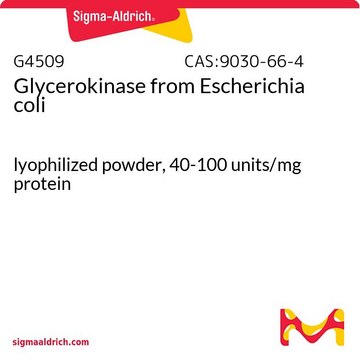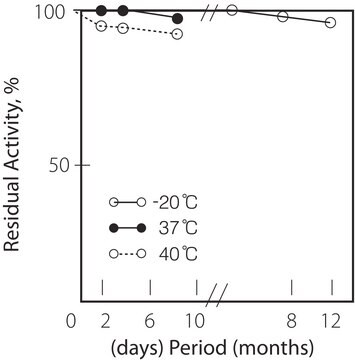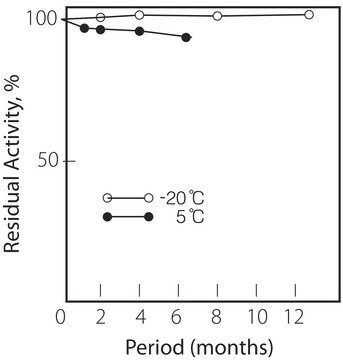G0774
Glycerokinase from Bacillus stearothermophilus
buffered aqueous solution, ≥75 units/mg protein (biuret)
Sinônimo(s):
ATP:glycerol 3-phosphotransferase, Glycerol Kinase
About This Item
Produtos recomendados
fonte biológica
Bacillus sp. (Bacillus steaarothermophilus)
Nível de qualidade
Ensaio
≥5.0 mg protein/mL (biuret)
Formulário
buffered aqueous solution
atividade específica
≥75 units/mg protein (biuret)
condição de armazenamento
dry at room temperature
cor
beige
aplicação(ões)
life science and biopharma
temperatura de armazenamento
2-8°C
Informações sobre genes
Bacillus sp. ... glpK(89613566)
Procurando produtos similares? Visita Guia de comparação de produtos
Descrição geral
Glycerol kinase is encoded by the GK gene on chromosome Xp21.2. Glycerol kinase is predominantly active in the liver.
Aplicação
Ações bioquímicas/fisiológicas
Definição da unidade
forma física
Palavra indicadora
Danger
Frases de perigo
Declarações de precaução
Classificações de perigo
Resp. Sens. 1
Código de classe de armazenamento
11 - Combustible Solids
Classe de risco de água (WGK)
WGK 3
Ponto de fulgor (°F)
Not applicable
Ponto de fulgor (°C)
Not applicable
Equipamento de proteção individual
Eyeshields, Gloves, type N95 (US)
Escolha uma das versões mais recentes:
Já possui este produto?
Encontre a documentação dos produtos que você adquiriu recentemente na biblioteca de documentos.
Nossa equipe de cientistas tem experiência em todas as áreas de pesquisa, incluindo Life Sciences, ciência de materiais, síntese química, cromatografia, química analítica e muitas outras.
Entre em contato com a assistência técnica









